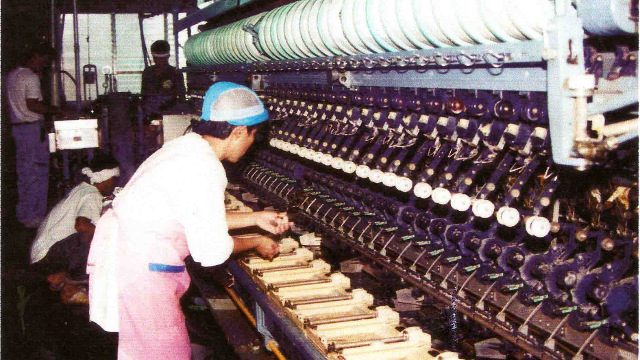SUMMARY
This is AI generated summarization, which may have errors. For context, always refer to the full article.

MANILA, Philippines – The local silk industry needs capital and government support in terms of promotion to take advantage of the huge global market, a government official said.
Talking about the potential of the country’s silk industry, Fiber Industry Development Authority (FIDA) administrator Cecile Soriano said they are preparing an investment roadmap and will pursue close coordination with other government agencies.
“We are calling for a meeting with the Board of Investments (BOI) and the Department of Trade and Industry (DTI). We are seeking investors in textile mills because there is a ready market. We want them to know that we have a working plan for the industry,” Soriano said.
Soriano said that FIDA is launching the two-phased industry roadmap by April.
Roadmap
The first phase — to be implemented between 2014 and 2017 — will be focused on recapturing the interest of farmers in the industry through capacity building and provision of farm inputs.
Expansion plans for mulberry plantations are also included to increase raw silk production.
The second phase — from 2018 to 2027 — will focus on encouraging investors to put up silk weaving facilities.
These are meant to increase silk fabric production, some of which may be exported to large markets, including the US, India, Singapore, France, Italy and Japan.
Production decline
Lack of interest among silk farmers due to inadequate investments in the industry and government assistance were the main reasons for the steady decline.
Domestic raw silk production output was cut to half in 2012 from 2003.
Domestic silk production reached just about 894 kilograms (kg) in 2012 out of 4,617 kg of dried cocoon, or a ratio of around 19%. In 2003, a total of 3,292 kg of silk was produced from 9,066 kg of dried cocoon, or a ratio of 36%.
Mulberry tree areas, which serves as food for silkworms and is used for silk production, were planted in a total of 157 hectares in 2012, down from almost 245 hectares in 2003.
Volume of silk fabric exported in 2012 reached 54,810 square meters. This was significantly lesser than in 2007 when the Philippines exported 75,440 square meters of silk fabric worth $1.04 million. Silk export earnings in 2007 were the highest in the industry’s history.
Export market
Organization for Industrial, Spiritual and Cultural Advancement (OISCA), the country’s biggest producer of raw silk comprising 80% of raw silk produce in 2012, said that the silk industry has a huge potential in the global market because of the high quality of silk in the country.
“Quality-wise, we are competitive (because the quality of local produce is competitive to those of major producers like China),” OISCA executive director Thelma Watanabe said.
“It is the volume that we cannot supply and the global market is always open. In Japan alone, there is a huge demand for silk. It is a young industry in the country but I believe it can grow if more farmers will be interested and the government can provide the necessary assistance,” she said. – with reports from Lean Santos/Rappler.com
Add a comment
How does this make you feel?
There are no comments yet. Add your comment to start the conversation.